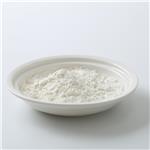Lanicemine is a non-selective, voltage-dependent NMDA channel blocker (IC50 = 4-7 μM) that binds to sites within the channel pore with a Ki value of 0.56-2.1 μM. Compared to ketamine , lanicemine exhibits a lower propensity to be trapped within the NMDA channel (86% versus 54% trapping) following removal and reapplication of glutamate. It has been examined for its potential to produce antidepressant effects without adverse psychotomimetic activity.
Lanicemine is a non-selective voltage-dependant NMDA channel blocker. It is a potential anti-depressant which does not cause psychotomimetic activity. Potential anti-hypertensive agent.
previous study with lanicemine and ketamine found that both compounds could bind with low-to-moderate affinity to sites within the nmda channel pore, exhibit strong voltage dependence, and have similar lack of nr2a vs nr2b subunit selectivity [1].
in animal study, cortical eeg recordings were obtained from rats trained to perform an auditory detection task for food reward. results showed that both lanicemine and ketamine produced pronounced dose-dependent elevations in spontaneous gamma-band eeg, but only gamma changes for ketamine were tightly coupled to increases in locomotor activity, indicating that lanicemine not only engaged brain circuits involved in the generation of gamma-eeg, but also influenced these networks independent of the broader systemslevel disruptions typical of ketamine [1].
[1] g. sanacora, m. a. smith, s. pathak, et al. lanicemine: a low-trapping nmda channel blocker produces sustained antidepressant efficacy with minimal psychotomimetic adverse effects. molecular psychiatry 19(9), 978-985 (2014).


